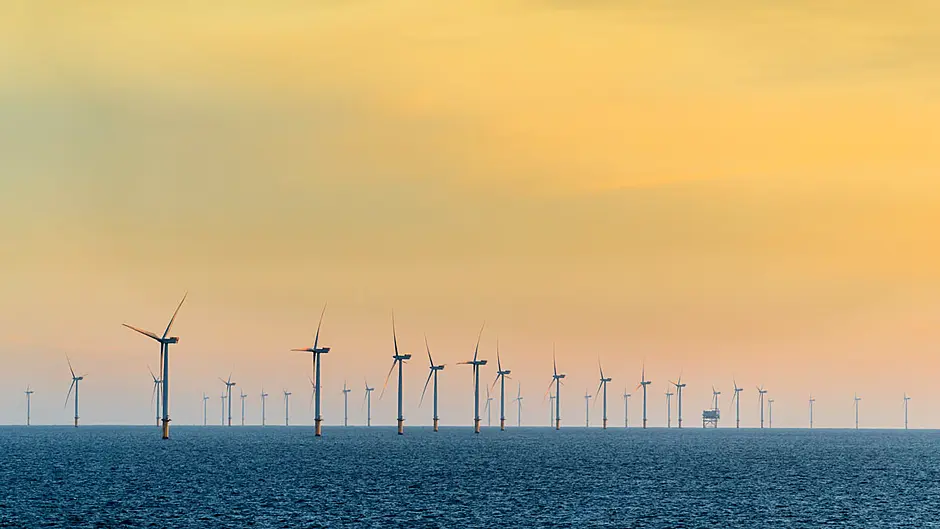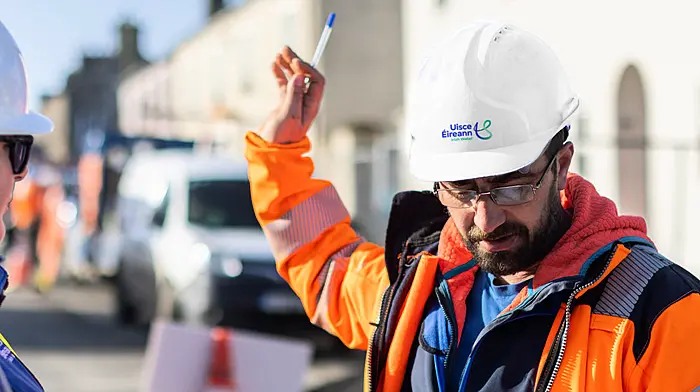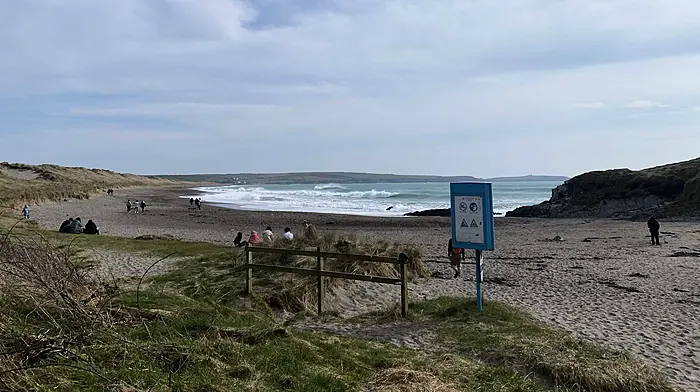‘Windfalls’ for Cork communities as developers dish out over €400k
ENERGY efficiency projects and third level scholarships, sports clubs, active retired groups and local festivals were just some of those to benefit from almost €3.5m dished out by the developers of Irish windfarms in 2019. The figures were released at the end of last year by the Irish Wind Energy Association.
Explaining the cash windfall for the local groups, Dr David Connolly, chief executive of the Irish Wind Energy Association, said: ‘We are constantly impressed by the dedication, enthusiasm and imagination we meet in local communities.’
And he added that, without the generosity of these windfarms, ‘many fantastic local projects would struggle to find alternative funding.’
He went on: ‘It is critical that communities see tangible benefits from renewables as part of the just transition away from fossil fuels. Local communities deserve to benefit from the construction and operation of local windfarms.’
With no reference to the various legal challenges to the windfarm sector, Dr Connolly said that wind energy continues to be Ireland’s most valuable tool in the fight against climate change. ‘The more clean energy we can generate for our homes, farms, schools and businesses, the less we rely on fossil fuels and the more we can invest in supporting communities.’
The report identified the top five counties for wind energy community benefit funding. Cork communities received the second highest amount of funding, with Galway leading the way with €831,860, (followed by Cork on €424,740), Roscommon on €334,600, Tipperary on €258,700 and Limerick on €243,250.
And he hinted at even more windfalls to come: ‘The level of community benefit funding is expected to rise in coming years as new windfarms connect to the system and with the introduction of the government’s Renewable Electricity Support Scheme (RESS).’
He said that projects seeking support under the RESS will be required to contribute €2 for every megawatt-hour (MWh) of electricity produced, which will typically result in ‘over €15,000 per turbine’ going directly towards local community projects every year.
Dr Connolly continued: ‘Under the RESS there will be a significant increase in the amount of funding going into Ireland’s rural communities from the next generation of wind and solar projects. We are proud that the wind energy industry is playing our part in enabling the volunteers at the heart of Ireland’s communities to continue to achieve the impossible and we can’t wait to see what we can accomplish together in the years to come.’
Survey firm is ‘rapidly recruiting’
ONE local firm that sees the danger of alienating the fishing industry is Green Rebel Marine, the Cork-based business established to service the future needs of offshore wind farms.
In January it announced what it called ‘a new strategic partnership’ with a company, formerly based in Cobh, but which will now be working out of Green Rebel Marine’s offices in Crosshaven, called Fisheries Liaisons Ltd.
Fisheries Liaisons staff will negotiate with fishing interests on Green Rebel Marine’s behalf, thereby smoothing the way for developers who are planning offshore windfarms.
Green Rebel Marine said all this was happening now ‘as development of offshore windfarms picks up pace’.
 Mick Horgan, the chief executive of Green Rebel Marine, believes offshore windfarms can be constructed in a way that protects the vital resource of the sea
Mick Horgan, the chief executive of Green Rebel Marine, believes offshore windfarms can be constructed in a way that protects the vital resource of the sea
The Crosshaven-based Green Rebel Marine provides extensive site surveys for windfarm developers.
It is currently ‘rapidly recruiting’, with a staff count already over 40.
Five of these jobs are at Crosshaven Boat Yard, 32 are at Green Rebel headquarters in Crosshaven, and four more work with its sister firm, Fisheries Liaisons.
‘The potential of the sea to produce renewable energy is currently unharnessed, and we believe that a network of offshore windfarms can be constructed in such a way that the vital resource of the sea is protected,’ said Mick Horgan, recently appointed company chief executive.
‘That is why we are about to undertake one of the most extensive surveys of the waters off the Irish coast ever,’ he told The Southern Star.
He added that Green Rebel aims to provide developers with the data they require to plan their developments in compliance with regulations, government guidance, and industry best practice.
He explained how developers can use the company’s information about the distribution of birds and marine mammals from its digital aerial surveys to locate their developments away from important breeding grounds or migratory routes and information about bird flight heights to limit collision risk.
‘Our core belief is that these surveys can and should be done in consultation and co-operation with all marine partners for the public good. It is not only possible, but crucial for human progress, that we find ways of both protecting and harnessing ocean resources. Responsible fishing is one example of this.’
Local fisheries lobby group IS&WFPO has expressed its concern over work undertaken by Rebel Marine’s Roman Rebel calibration ship off Ballycotton recently.
It said a response it received, which did not include any reference to establishing if permission was needed for the survey work, ‘did not augur well’ for any relationship between it and the fishing industry.
In response, Mr Horgan said the Roman Rebel had ‘avoided environmentally sensitive areas’, and no equipment requiring marine mammal observers was used.
‘Thus, we are happy to confirm that no permission was required for our very brief stint of equipment testing, during which, we happily worked around—sometimes literally—Irish fishermen. We understand the concerns that fishing organisations have, based on their previous experience.
‘Through Fisheries Liaisons, Green Rebel will be looking to meet with IS&WFPO at the earliest opportunity to discuss how we work, and what we will be doing in the future.’
He added the firm does more to mitigate its impacts than anyone else undertaking similar works. ‘Fishing, shipping, construction, and surveying all impact the marine environment to some degree,’ Mr Horgan suggested, adding: ‘Of the clients we have engaged with, everyone has freely expressed the importance of Irish fisheries during every step of investigation and development.’
‘No-one benefits from confrontation,’ Mr Horgan said ‘but we all win through partnership. We look forward to further engagement with all marine users as we begin the process of gaining more understanding of the seas off our shores.’
Wildlife lobby group wants cautious approach
 Proper marine spatial planning is key to minimising conflicts, and shouldn’t be rushed, says the IWT.
Proper marine spatial planning is key to minimising conflicts, and shouldn’t be rushed, says the IWT.
THE Irish Wildlife Trust (IWT) has said that the ecosystem needs to be considered by offshore operators as there are still ‘knowledge gaps’ regarding the sector.
Regina Classen, IWT project officer said the Trust is not against offshore windfarms, because they believe they are integral to the decarbonisation of the economy.
‘However,’ she added, ‘the industry is young and there are substantial knowledge gaps regarding its impacts.’
She said it was vital that proper marine spatial planning principles are followed, especially the precautionary principle and the ecosystem-based approach.
‘In addition, there is a need for strong mitigation measures, particularly to offset environmental impacts (eg noise) during the construction phase.’
The spokesperson added that vigorous environmental surveys are also necessary to ensure windfarms are placed away from vulnerable ecosystems or species, that may one day be designated as marine protected areas.
‘Of course Ireland has committed to scaling up their marine protection from the current 2% to 30% by 2030, so proper spatial planning is key to minimise conflicts between sectors and the environment and this process shouldn’t be rushed.’
Winds of change: Part 3 of our special report into offshore windfarms is available to read here.










